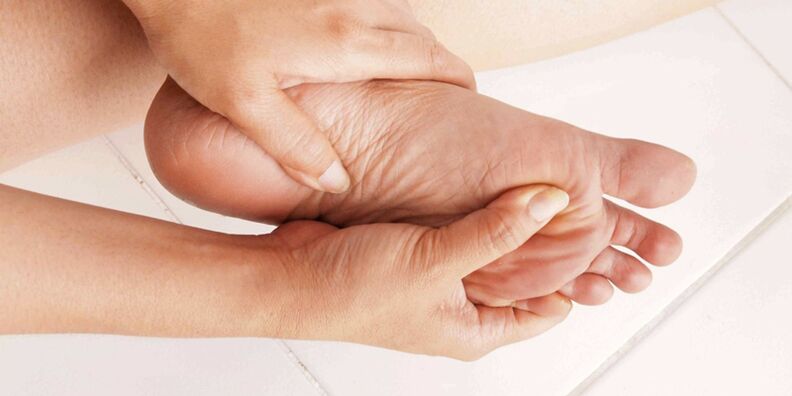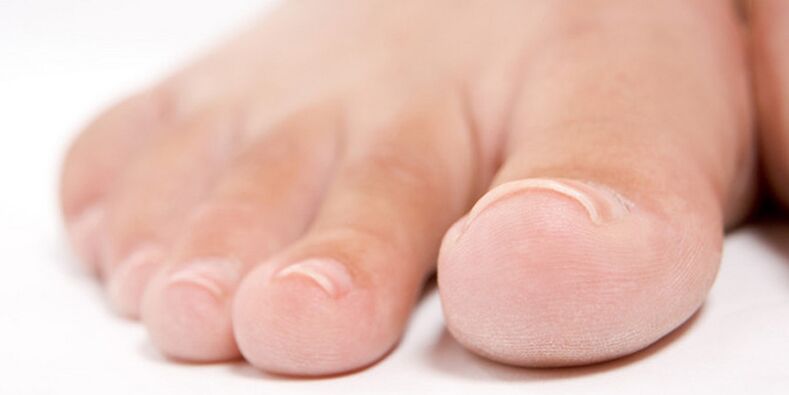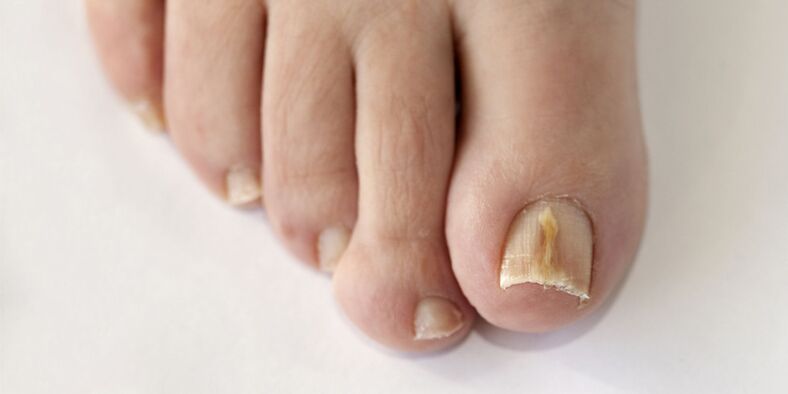
One of the most unpleasant diseases that suddenly appears and causes a lot of trouble is onychomycosis. Some treat it for years, others - only for a few months. Why is it that? This is because there is an important rule: if the symptoms of nail fungus are detected at an early stage, the time of treatment is significantly reduced.
Unfortunately, not everyone is able to recognize it immediately after infection. Fungal spores gradually "populate" the area of human skin, so you need to pay attention to the slightest suspicious change in your skin and nails so as not to miss the first signs of the disease.

Causes and signs of fungal infection of the foot
Few examine their feet thoroughly every day. Often, not all nail fungi are recognized, as different types of spores can live on the surface of the skin for a long time without showing themselves in any way. For example, fungi of the genus Candida are usually on the feet of every human being. We are talking about a conditionally pathogenic flora that causes the development of the disease under certain unfavorable conditions. What can serve as a boost in the appearance of the mushroom?
- Immune deficiency conditions (oncological diseases, congenital pathologies, autoimmune diseases, AIDS, hepatitis and others).
- Diabetes. The so-called diabetic foot is very often affected by fungi and bacteria due to harmful blood flow and the development of ulcers and non-healing wounds.
- Hyperhidrosis or excessive sweating of the skin. Because nail fungus feels great in a humid and warm environment, it is not difficult to recognize on the skin of a person with excessive sweating.
- Endocrine disorders.
Onichomycosis is very easily infected, for example in a swimming pool, sauna or gym. Fungal spores can settle on the skin where there are cracks, wounds and injuries. It is important to diagnose the disease at the first manifestations because the outcome of treatment depends directly on it. Traditionally, onychomycosis can be divided into several stages, each of which has several signs.
- Initial stage: the skin of the legs is slightly itchy and flaky, the external manifestations of the fungus, as we are used to seeing in the photo, usually do not occur. You may feel unusually dry skin, nothing else.
- The next stage is characterized by the appearance of red spots or whitish plaque on the skin of the foot and between the toes. It all depends on what type of mushroom affects your feet. The spots are of different sizes and are usually well demarcated with scaly edges. The white coating resembles powder or flour.
- Furthermore, bubbles with fluid begin to form on the feet, spread unevenly on the surface of the skin, and rupture over time. An ulcer forms at the site of the bursting bubble that does not heal for a long time.
- In one of the last stages, the fungus can be identified on the nails because changes in the nail plate often begin after the appearance of itchy skin and ulcers. The nail thickens noticeably. You can see how flaky it is and the free edge collapses. The color of the nail plate also changes: yellow-green, brown or even black. It separates from the nail bed when exposed.

Onychomycosis detected: what to do?
In case you notice the above manifestations on your feet, you should immediately visit a dermatologist, a mycologist - a specialist in studying fungi or a podologist (a doctor who specializes in foot and nail problems). Without fail, you will be prescribed an analysis of the nail fungus in order to find out its type and the extent of its infection. Most often, onychomycosis occurs when the foot is affected by fungi:
- Trichophytos,
- Dermatophytes,
- Spores of the genus Candida.
If the initial stage of the nail fungus is characterized by only a few tiny marks and is localized on only one leg, as shown in the photo, you are in luck.

It is likely that your doctor will prescribe a standard treatment regimen with antifungal drugs that effectively kill the fungus.
Ointments, creams, sprays and special nail polishes are recommended for therapy.
Unfortunately, sometimes one notices the appearance of nail fungus when the initial stage is long gone.

Based on the photo, you can easily see that the disease is running: the calendula is deformed, peels off the nail bed and changed color, deep and painful cracks have formed between the fingers, both feet are affected by the fungus. In such a situation, antibiotic therapy as well as treatment with immunostimulatory and antiallergic drugs and taking vitamins will help. You can supplement the complex therapy with recipes of traditional medicine: baths with herbal decoctions, sea salt and soda, treatments with vinegar solution, garlic, lard and other ingredients.
In the most extreme case, the marigold affected by onychomycosis is removed by surgery or cut with the help of a special cutter in the office of a pedicurist (podologist).
Now you know how the fungus on the legs manifests itself, the causes of its occurrence and how to treat it. We hope you found this information helpful.

























